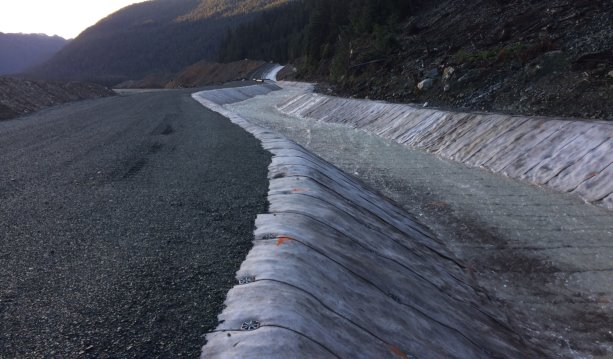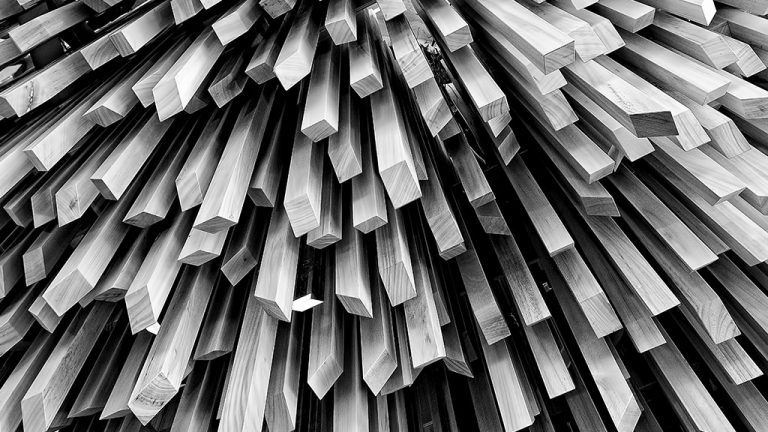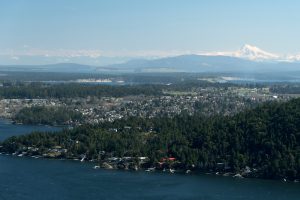A British Columbia company continues to roll out sales of its innovative concrete-embedded cloth across a wide variety of applications.
Nuna Innovations Inc. first brought Concrete Canvas to Canada seven years ago, importing it from the British manufacturer.
It’s a PVC material embedded with cement that can be draped, laid or anchored into or on top of any form or structure.
Once in place, it’s simply sprayed with water and the cement cures over 24 hours, hardening into shape according to placement.
It was originally created for the British military and envisioned for use as quick-build shelters in disaster areas or war zones.
"But that end of it never took off," says sales manager Rebecca Spitzer, noting there isn’t a lot of demand for disaster shelters in Canada.
Still, the product is finding high demand from the oil and gas, mining, erosion control and energy sectors as well as railways.
"We’re doing a lot of work with CN Rail because they have hundreds of culverts across Canada and they need to replace them, or at least with Concrete Canvas, reline them," she says.
The product comes as Concrete Cloth and Concrete Canvas in rolls with five, eight and 13 millimetre thickness and is cut and put in place.
"We had a customer in the U.S. on the California coast who has some soil erosion problems so he bought some Concrete Canvas and installed it on the embankment between his home and the ocean front," Spitzer says. "We set it in with rock anchors and he, being an ex-military guy, painted it as camouflage. Apparently you can’t really tell it’s concrete from the ocean side."
On the commercial side it’s most commonly used as ditch liner. Nuna recently completed its biggest ever installation at a Myra Falls zinc and copper mine.
Some 11,125 square metres of eight millimetre Concrete Canvas was laid into a 735 metre long water diversion channel at the Vancouver Island site. It replaced an existing shotcrete base and the channel itself was also enlarged to handle more water at a higher velocity, up to 20 metres per second with slopes as steep as 16 and 20 per cent.
While other materials were considered, the speed and ease of Concrete Canvas won the day, Spitzer says, along with its ability to be quickly and efficiently patched and repaired if falling trees or dislodged boulders damaged it. The job was done in six weeks with an average crew of six workers in extremely hot conditions of 34C and well ahead of the rainy season in October.
Spitzer also says Concrete Canvas is being deployed in Alberta’s irrigation system at the St. Mary River Irrigation district in a pilot project. The 600 square metre installation of five millimetre Concrete Cloth started in April to replace the original poured concrete in the channel which had failed due to slumping substrate in many areas.
It was installed over the existing concrete bed and secured via an anchor trench, 12-inch spikes and stainless steel self-tapping screws. So far the installation has performed to expectations but the final assessment will be done after a couple of seasons, Spitzer adds.
Data to date suggests Concrete Canvas stands the test of time. In 2013, a water diversion ditch was laid with 90 square metres of five millimetre Concrete Canvas. The original surface was overgrown and it was disrupting water flow.
Three years later the new liner was holding without issue. While vegetation grew back along the periphery, there were no issues in the water flow basin.
The mining sector has also expressed interest in using the Concrete Canvas as a flooring material. They already use it as a tailing pond liner and as a vent wall for blasting management.
Nuna also distributes Portafloor, a highly resilient plastic modular system that clips together to form a stable, high performance floor used in military and mining. The Glencore Matagami zinc and lead underground mine in Quebec opted to use the product as a floor for the five metre by 10 metre areas of their electrical substation.
It was installed over a rolled rock substrate and doubled up under the electrical equipment to provide a 26 millimetre base over three days.
"Normally they’d pour concrete but with Concrete Canvas all they had to do was roll it out over compacted substrate," says Spitzer. "They can’t drive vehicles over it but it works for what they need and it meant they didn’t have a lot of trucks coming in and out to pour the floor."
As demand for the product has grown, manufacturing has also shifted to North America.
Initially, Nuna, which holds distribution rights for Canada, Alaska, Washington and Oregon, was importing the material from the U.K. More recently a factory in LaGrange, Ga. has been manufacturing Concrete Canvas.
"Right now they’re churning out eight millimetre which is the most popular," she says. "So we have customers waiting for five millimetre and 13 millimetre. It’s getting really busy with lots of demand."












Recent Comments
comments for this post are closed